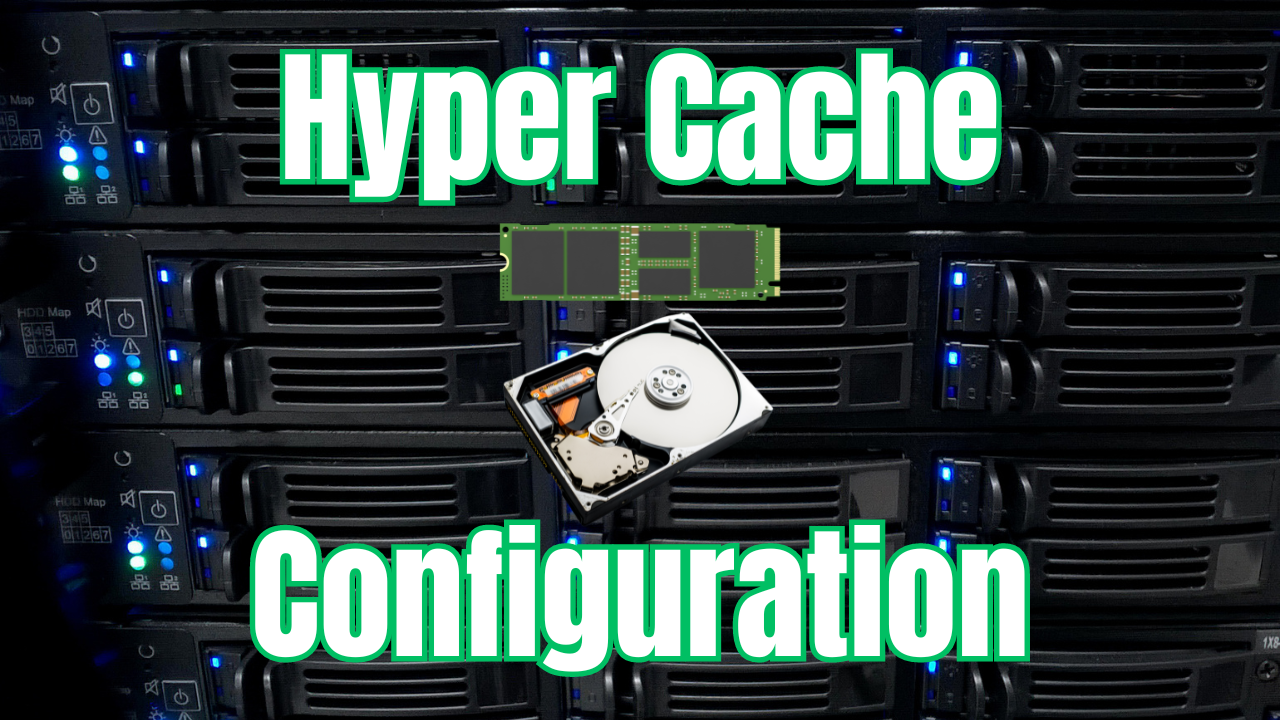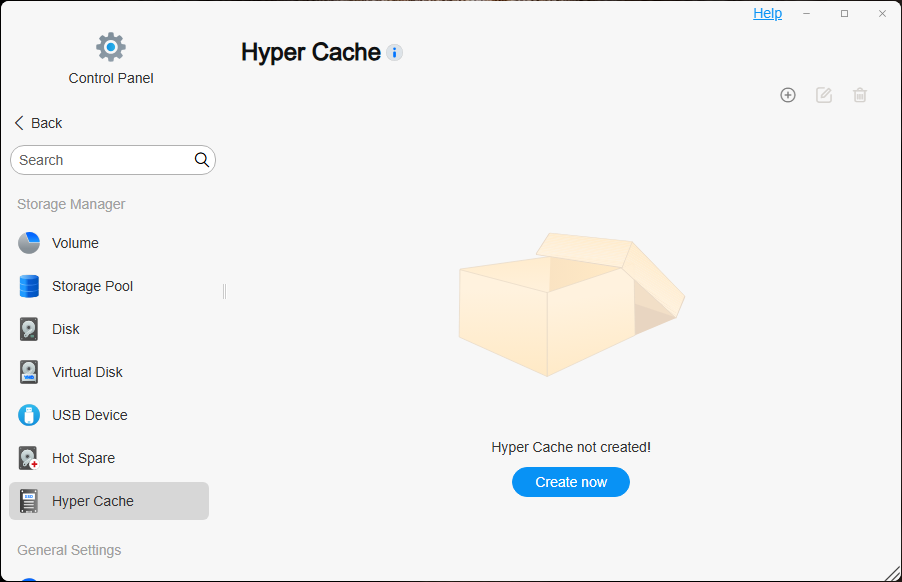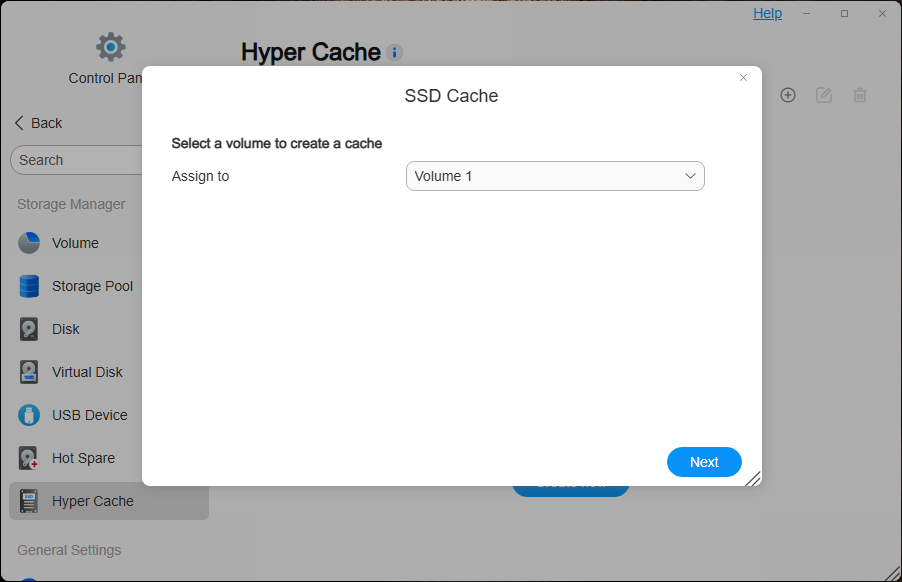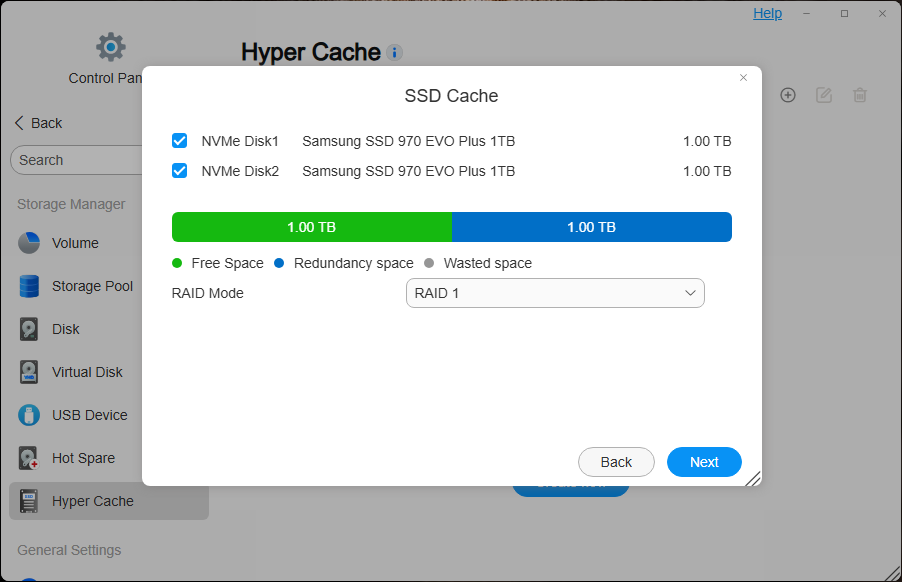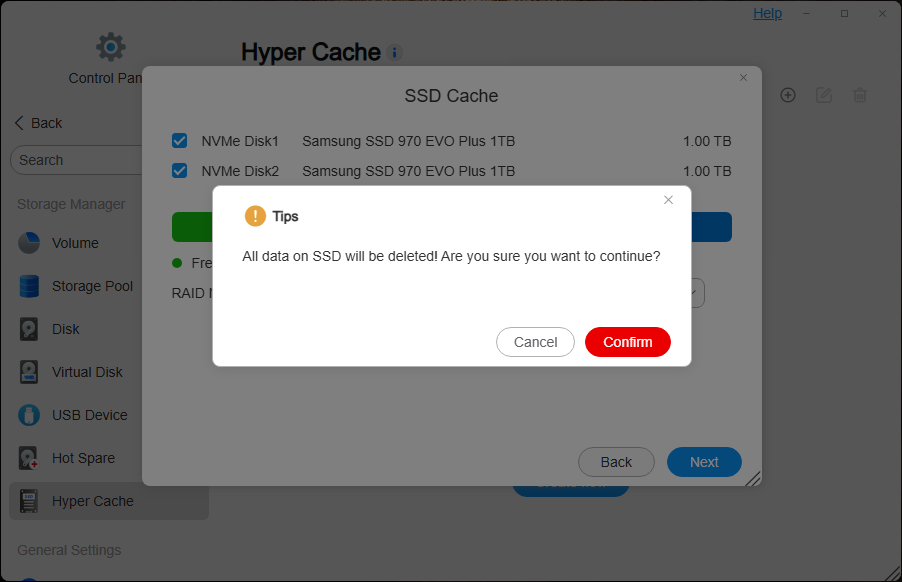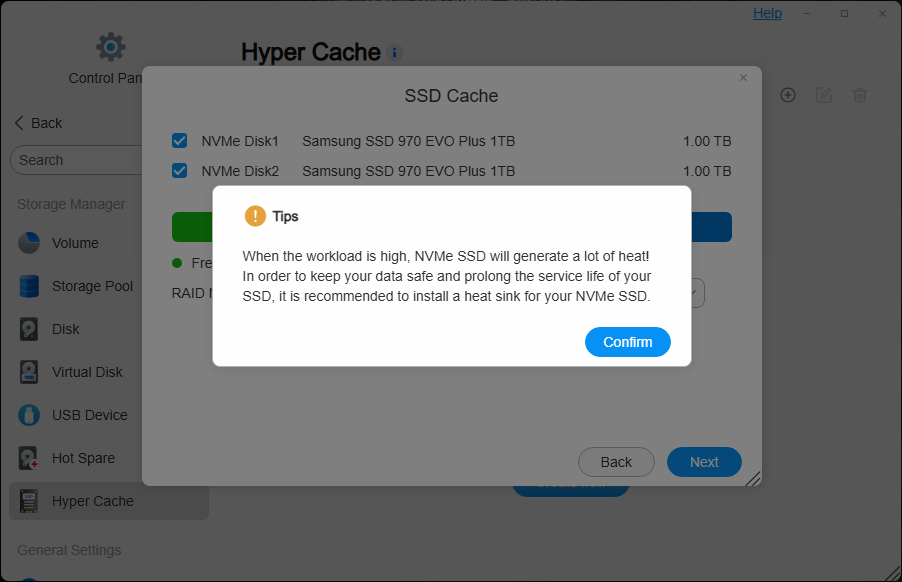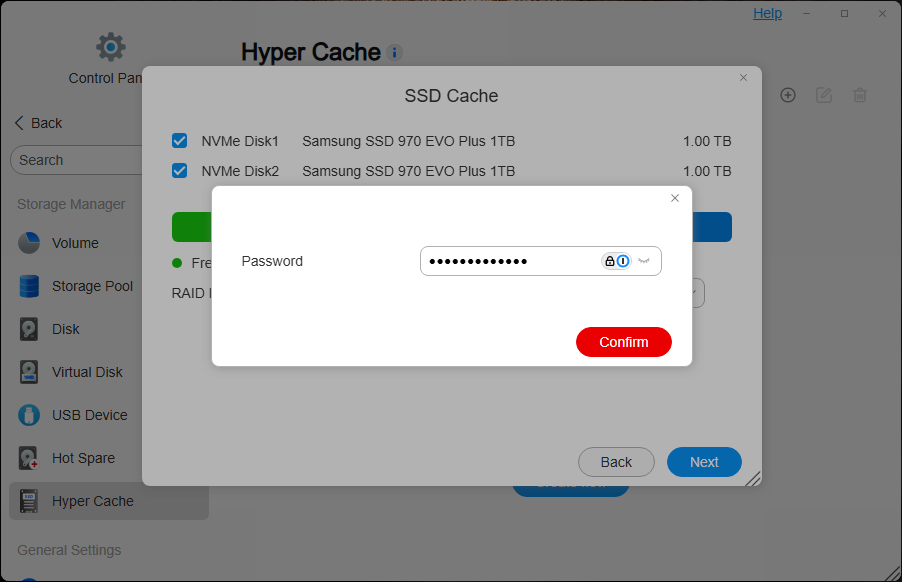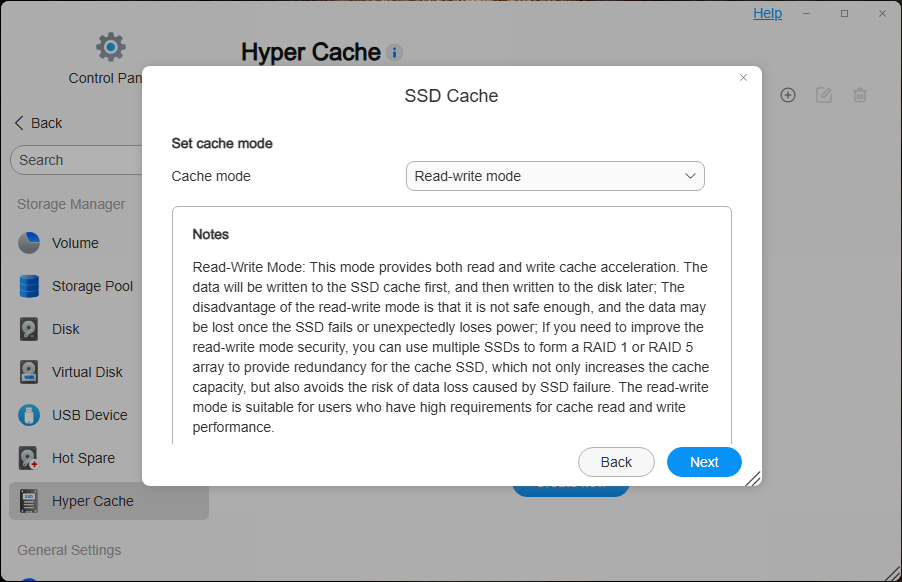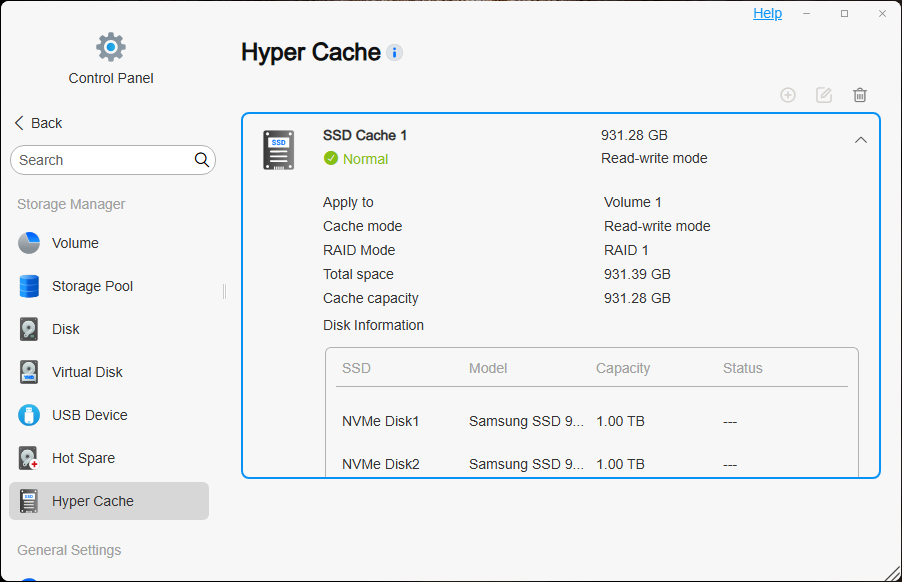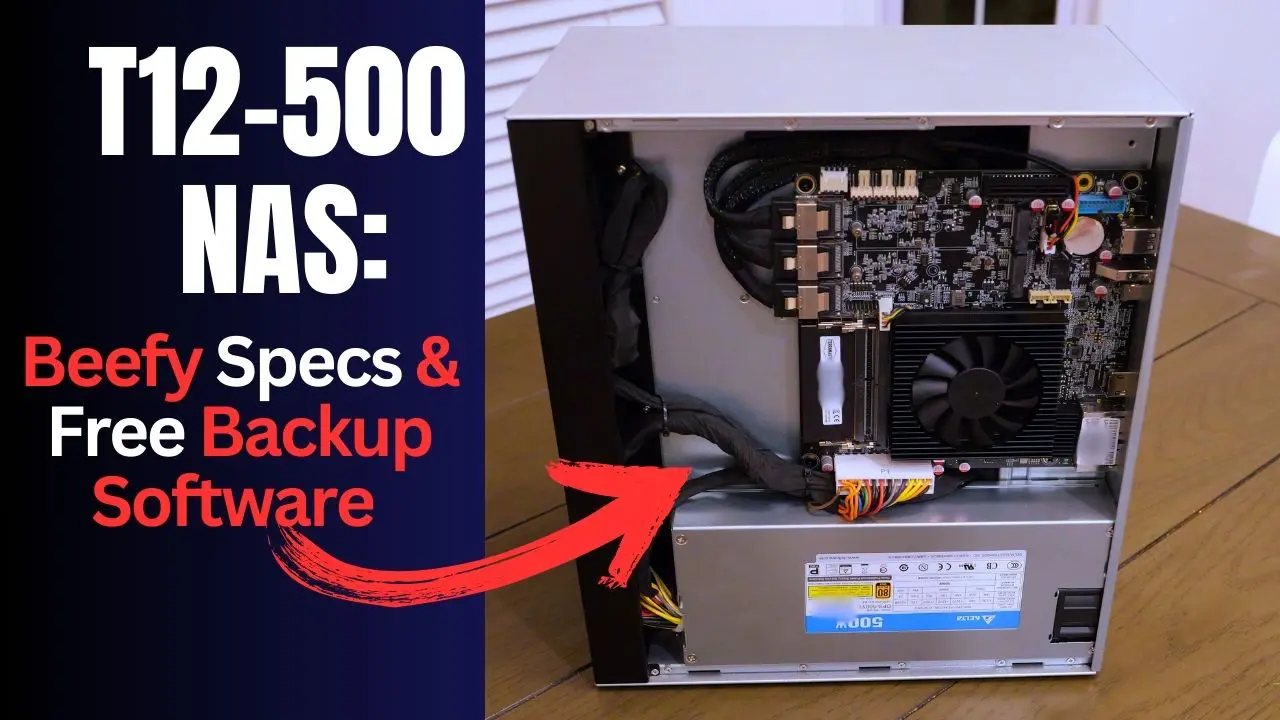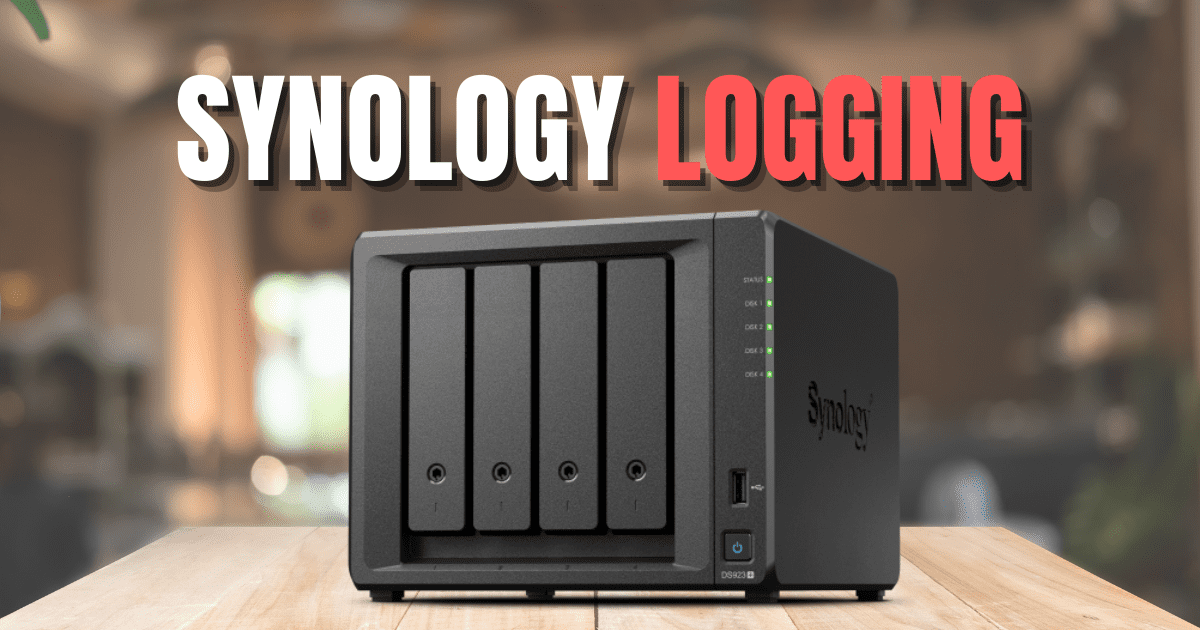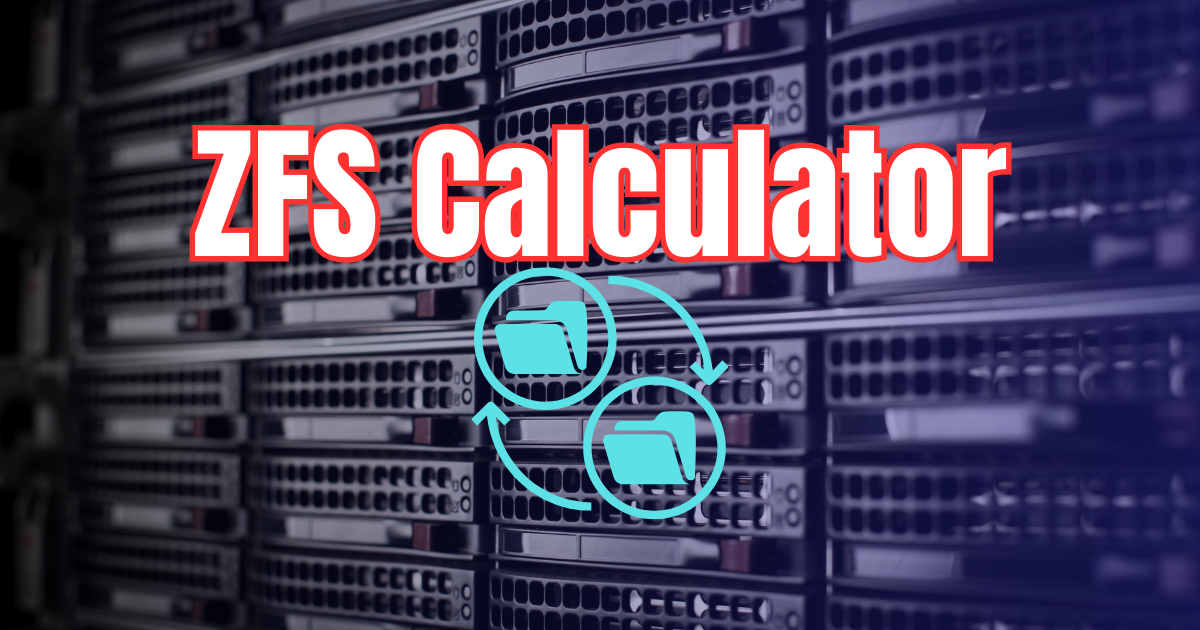In working with the TerraMaster F4-424 Max, one of the features that I wanted to play around with was the SSD cache on this hybrid NAS. I installed (2) NVMe drives in the unit along with the spindles that I have running in the volume. I wanted to step you guys through how you can set up Terramaster Hyper Cache on a volume for best performance and the options you have there.
Table of contents
NAS SSD cache and why important?
First, let’s take a quick look at why SSD cache is important. The beauty of the SSD cache functionality is that it allows these hybrid NAS devices to have a great mix of performance and capacity. The capacity comes from the traditional spindles that you can now get in multi-terabyte sizes. However, these are not known for their performance.
Adding one or more SSD caches in front of traditional spindles allows you to have a great mix of the two. To accelerate system performance, the SSD Cache caches frequently accessed data or “hot” data onto lower latency Solid State Drives (SSDs).
Reads and writes can be cached to the SSDs and then offloaded, in the case of writes to the spindles. The F4-424 Max has (2) M.2 slots that allow you to have NVMe speed in front of your spindles.
TerraMaster Hyper Cache
TerraMaster’s implementation of SSD caching is something they call Hyper Cache. Note the following information about Hyper Cache:
- Hyper Cache is a unique SSD cache that has 3 cache modes to choose from, including write + read, read-only, and balance
- Combining HDD and SSD forms a hybrid storage pool, and as we mentioned, it improves storage performance
- SSD cache can increase random reads or writes per second by 10X and reduce average delay by over 50%
- Hyper Cache allows users to choose cache acceleration modes
- It helps to improve cache acceleration performance by 35% and reduces memory usage by 10%
Prerequisites to create TerraMaster Hyper Cache
There are a few things that you need to keep in mind when you are about to create the Hyper Cache:
- You must have at least (1) SSD installed in the F4-424 Max
- The drive must not be included or claimed by another volume
- The SSDs are dedicated to the purpose of caching and can’t be used for regular data storage
- You need to have a Volume created on your TerraMaster NAS, but only one volume is fine
Configuring TerraMaster Hyper Cache
Let’s look at the steps to create TerraMaster Hyper Cache using the TOS 6 user interface. Open Control Panel > Hyper Cache. Click Create now.
Here is where you will see the need to have a volume created. If you don’t already have a volume created, this screen will show up, but won’t allow you to move forward until you choose a volume from the dropdown which won’t exist without having creating one first.
Next, choose your RAID Mode. Here you can choose RAID 0 or RAID 1.
Next, you will get a warning that the data on the disks will be erased. You will need to confirm it.
It next displays the tip that you will want to have NVMe heat sinks on your NVMe drives as these may heat up quite a bit being used as SSD cache.
Enter your password to confirm the drive erasing.
Below, the next configuration screen is extremely important. This is where you can configure the mode of the SSD cache. TerraMaster Hyper Cache has three modes to be aware of:
- Read and Write mode – Read and write mode allows you to have both read and write cache acceleration. In this mode, data is first written to your SSD cache and then to the spindle disk at a later time. The disadvantage of this mode is data can be lost in the event of a power failure. However, you can run RAID 1 with the (2) M.2 slot NVMe drives or RAID 5 raid type if you have at least 3 SSDs. This mode is great for high cache-reading and write performance requirements.
- Balanced mode – This mode’s strength is read caching. The data goes to your SSD cache first and the hard disk synchronously. Writing is slower since it goes to the spindles at the same time, but data reading is accelerated. This mode is protected from data loss due to power failure or SSD failure. RAID 0 with two SSDs will help with performance as it would improve the cache read/write speed. If you have low caching requirements with cache-writing but high cache-reading requirements this is the best mode for that.
- Read-only mode – This mode accelerates read performance only. Data is written directly to the hard disk rather than the cache. Any SSD failure does not mean there is a chance of losing data. In read-only mode, cache reading can be accelerated by creating RAID 0 with SSDs. This mode is best when you want to make sure data won’t be lost due to cache failure and you have low write cache requirements.
Below, I chose Read-write mode since I want to use it to run some virtual workloads as well by targeting the volume for iSCSI, etc.
After you finish out the configuration of the TerraMaster hyper cache configuration, you will see the volume synchronize like any other RAID volume and see the status go to normal after it is completed.
Use cases for Hyper Cache and NAS SSD cache in general
There are many use cases that will likely benefit from the NAS SSD cache performance provided by Hyper Cache:
- Video editing – requires high speed and caching capacity
- A cache array using two SSDs can vastly improve the speed of reading large video files.
- Website databases require high 4K reading performance and security.
- The configuration of balance mode + RAID 0 can guarantee security and achieve the required read rate.
- Running virtual machines in the home lab or SMB – The NAS SSD cache functionality of Hyper Cache greatly helps with the random I/O performance needed by virtual machines
- Contact our team for purchasing, return, replacement, RMA service, or technical support at [email protected].
Wrapping up
The TerraMaster Hyper Cache NAS SSD cache is a great way to drastically improve performance on these hybrid-type NAS devices, as it gives you the best of both worlds in terms of capacity and performance. With models like the TerraMaster F4-424 Max, performance is really good using the SSD cache in front of your RAID volume. The TOS 6 software makes setting this up extremely easy.
Google is updating how articles are shown. Don’t miss our leading home lab and tech content, written by humans, by setting Virtualization Howto as a preferred source.

